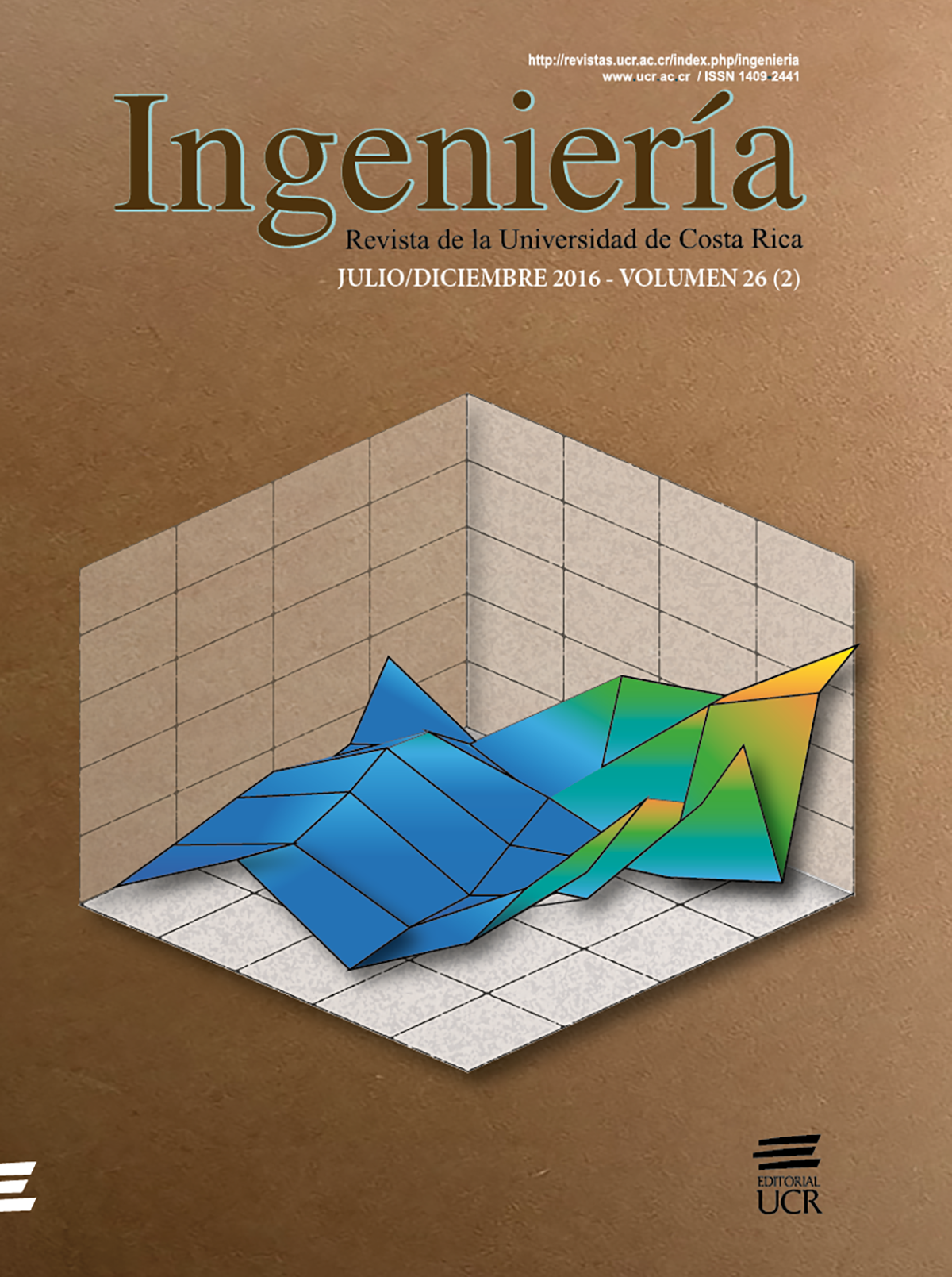Resumen
Se presenta un método simplificado para el cálculo del factor de carga en conexiones apernadas en función del diámetro del perno y del largo de la junta. Mediante aproximaciones entre los parámetros geométricos vinculados a la conexión, se obtiene una ecuación lineal que habilita el cálculo del factor de carga cuando el material del perno y de los materiales a unir está hecho de acero. Al comparar los resultados obtenidos con los métodos habituales, se presentan porcentajes máximos de error de 15%, por lo que la expresión deducida puede emplearse como regla de dedo así como cálculo definitivo de conexiones apernadas.Citas
Bickford JH. Introduction to design and behavior of bolted joints. 2nd ed. Boca Ratón: CRC Press, 2008. Inglés.
Motosh N. Determination of joint stiffness in bolted connections. ASME Journal of Engineering for Industry. 1976; 98(3): 858-861. Inglés.
VDI 2230 Part 1. Systematic calculation of high duty bolted joints; Joints with one cylindrical bolt. Dusseldorf: Verein deutscher ingenieure. 2015. Inglés.
Cornwell RE. Computation of load factor in bolted connections: Proceedings of the Institution of Mechanical Engineers. Part C. Journal of mechanical engineering
sciences. 2009; 223(4): 795-808. Inglés.
Alkatan F, Stephan P, Daidie A et al. Equivalent axial stiffness of various components in bolted joints subjected to axial loading. Finite element in analysis and design. 2007; 43(8): 589-598. Inglés.
Perdesen NL, Pedersen P. On prestress stiffness analysis of bolt-plate contact assemblies. Archive of Applied Mechanics. 2008; 78(2): 75-88. Inglés.
Nassar SA, Abboud A. An improved stiffness model for bolted joints. ASME Journal of Mechanical Design. 2009; 131(2): 121-132. Inglés.
Haidar N, Obeed S, Jawad M. Mathematical representation of bolted-joint stiffness: A new suggested model. Journal of Mechanical Sciences and Technology. 2011; 25(11): 2827-2834. Inglés.
Canyurt OE, Sekercioglu T. A new approach for calculating the stiffness of bolted connections. Proceedings of the Institution of Mechanical Engineers, Part L: Journal
of Materials Design and Applications. 2015; 1464420715576557. Inglés.
Marshall MB, Lewis R, Dwyer-Joyce RS. Characterisation of contact pressure distribution in bolted joints. Strain. 2006; 42(1): 31-43. Inglés.
Grosse IR, Mitchell LD. Nonlinear axial stiffness characteristics of axisymmetric bolted joints. ASME Journal of Mechanical Design. 1991; 112(3): 442-449. Inglés.
Shigley JE, Mishcke C, Budynas RG. Mechanical engineering design. 7th ed. New York: McGraw Hill. 2003. Inglés.
Ito Y, Toyota J, Nagata S. Interface pressure distribution in a bolt-flange assembly. ASME Journal of Mechanical Design. 1979; 101 (2): 330-337. Inglés.
ANSI/ASME, Standard B1.13-1983(R 1989). New York: American National Standard Institute, 1989. Inglés.
Oberg E, Jones FD, Horton HL et al. Machinery’s Handbook. 26th ed. New York: Industrial Press. 2000. Inglés.
Wileman J, Choudhury M, Green I. Computation of member stiffness in bolted connections. ASME Journal of Mechanical Design. 1991; 113(4): 432-437. Inglés.


